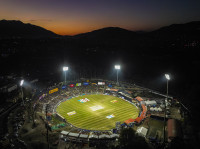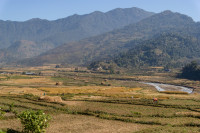Opinion
The ideal transition
The regional and domestic challenges that Nepal has confronted in recent years clearly confirm that applying the correct method for a favourable transition is key to making democracy, stability and economic feasibility a lasting reality.
Binoj Basnyat
The regional and domestic challenges that Nepal has confronted in recent years clearly confirm that applying the correct method for a favourable transition is key to making democracy, stability and economic feasibility a lasting reality. Towards this end, the country needs to learn from others who have gone through or are experiencing a similar transition.
Art of coalition politics
In South Asia, violent divergence on issues related to poverty, exclusion and inequality have been constant reasons for transitions. However, spillover effects of conflict arising from sources of transitionhave been contained by progressive methods like focusing on the greater interest of the region. Open military confrontations in recent decades have been rare and limited. Nepal needs to learn from this. It appears that the country’s vision for transition is fading, and it is recognisable only in particular cases. Progressive transition will only be possible if the country focuses on the ‘greater interest of the nation’. The vision of Nepal’s transition needs to be well defined and national interests should be upheld.
State-to-state level differences across the world also subside largely because of economic inter-dependence. Regionalisation between India and China presents the possibility of avoiding unfavourable outcomes if inter-dependence is prioritised.There are two main aspects of a proper process in a transition. One, right practice; and two, right leadership to practise this right practice. If we look at Nepal’s transition from war to peace, we will notice that the decade-long conflict or the practice of civil warfare was not really the chief force that led to the 2006 Comprehensive Peace Accord. The transition only became possible because democratic practice was applied and a rebel-led “people’s movement” was conducted withleading political parties. Democratic practice, in this case, was the right process applied in transitioning to peace.
Similarly, preventive measures in engaging with opposing entities like the Samyukta Loktantrik Madhesi Morcha (SLMM), which holds a different view on the promulgation of the constitution and has denounced the Maoist-Congress government’s announcement of local elections, require proper practice. Failure to implement the democratic process will only create further obstacles during Nepal’s transition into a new administrative structure. Recent headlines show that the chiefs of Nepal’s security forces have assured the leadership that the security apparatus is capable of conducting the polls peacefully.
Protesters in Nepal’s southern belt may think otherwise; therefore, managing the issue through a democratic process by striking a progressive deal will lead to a political settlement. This brings us to the leaders who need to be able to communicate the national target and interest convincingly. Continuing unpopular leadership practices which are well known to Nepali society will, sooner or later, lead to a dispute. The art of coalition politics, on which Nepal’s transition is founded, requires that the leadership shows the ability to expand the alliance. Failure to do so will lead to flawed democracy where dozens of leaders come and go in a short period of time. Here, too, communicating national interests will set the course straight.
Democratic, equal, inclusive
The major obstacles that need to be overcome to avoid further delay in Nepal’s political and economic transition are the following.
Not resorting to warfare as a solution: The Maoists stir against the democratic government and democratic practice, preferring the line of violence and warfare against inequality and exclusiveness, was one of the biggest obstacles in Nepal’s political transition.
Constitutional amendments: Political tensions between the government and the opposition over constitutional amendments are at the highest level of discussions. The promulgation of the constitution and the formation of the Truth and Reconciliation Commission (TRC) and the Commission of Investigation on Enforced Disappeared Persons (CIEDP) took many years. Managing this will require swift decision-making, keeping in mind the importance of incorporating the majority and all-party consensus.
Managing the vicious cycle of coalitions: Since 1990, there has been a procession of coalitions and heads of government. A new administrative leadershipwill be the 26th head of government in 27 years. The frequent reshuffling and inconsistent leadership is an obstacle to political transition and good governance.
Divided nationalism: At the structural level, there are two emerging fissures that will further fragment Nepali nationalism. A demographic and geographic divide will only deepen political uncertainty. In this case, federal division should not undermine nationalism and unity of the Nepali people. A demographic divide will put the Madhesis against the Pahadis, and a federal divide and state-based parliaments may introduce further obstacles.
Local elections: Announcing that the local election will be held on May 14 before satisfying the leaders of the SLMM will prove to be an obstacle to holding it. Having all parties on board will reduce security uncertainties and legitimise the poll results. Similarly, there are economic obstacles, including post-earthquake matters that the country faces. These, however, remain unnoticed in the midst of heightened political transformation.
Sometimes, in political and economic transitions, questions may appear to be complicated, but in reality, they are not. The answers are simple, as long as the process of the transformation is democratic, equal and inclusive in nature. Therefore, in the process of managing and institutionalising multiple transformations in Nepal, it is important for us to not only learn from our own experiences, but also from the experiences of others that are familiar to such transformations. And applying proper process and managing obstacles in the course of the transition will determine the circumstances ahead.
Basnyat is a political and securityanalyst and a retired army major general




 16.12°C Kathmandu
16.12°C Kathmandu










